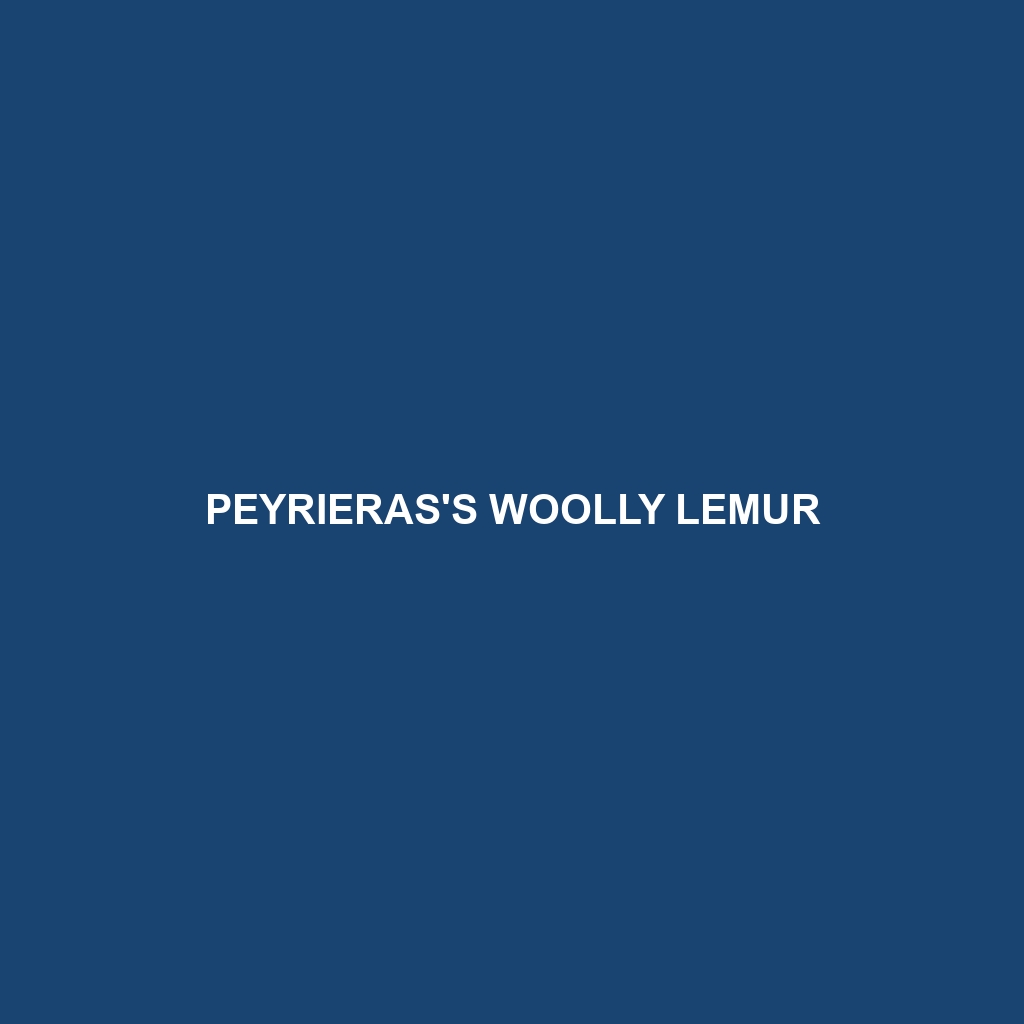Peyrieras’s Woolly Lemur (Common Name)
Common Name: Peyrieras’s Woolly Lemur
Scientific Name: Avahi peyrierasi
Habitat: Peyrieras’s Woolly Lemur is primarily found in the lush, humid rainforests of Madagascar, particularly in the eastern lowland forests. These unique ecosystems provide the ideal environment for this species, offering abundant foliage and a dense canopy that facilitates its arboreal lifestyle. The limited geographic range contributes to its vulnerability, as habitat loss is a significant threat.
Physical Characteristics: This distinctive lemur measures about 40 to 50 cm in length, with a thick, woolly fur that varies in color from grayish-brown to darker hues. Notable features include its large, expressive eyes, which give it exceptional night vision, aiding its nocturnal activities. The tufted ears and long tail support its intricate movements through the trees, making it well-adapted to its environment.
Behavior: Peyrieras’s Woolly Lemur is known for its social and elusive nature. These lemurs are nocturnal, primarily active during the night when they forage and socialize. They are typically found in small family groups, utilizing vocalizations to communicate with each other. Their agile movements and remarkable climbing skills allow them to navigate the treetops with ease.
Diet: The diet of Peyrieras’s Woolly Lemur mainly consists of leaves, fruits, and flowers. They exhibit a folivorous feeding habit, often consuming the leaves of various trees, which provides them with essential nutrients. Their selective foraging behavior not only supports their health but also plays a critical role in the health of their forest habitat by promoting plant growth.
Reproduction: Peyrieras’s Woolly Lemur typically breeds once a year, with a gestation period of approximately 120 days. The breeding season generally occurs during the warmer months, leading to the birth of one or two offspring. The mothers are known to be very protective, nurturing and teaching their young essential survival skills in the forest.
Conservation Status: Currently, Peyrieras’s Woolly Lemur is classified as Endangered according to the International Union for Conservation of Nature (IUCN). The primary threats include habitat destruction due to logging and agriculture, as well as hunting. Conservation efforts are crucial to ensure the survival of this species in its natural habitat.
Interesting Facts: One fascinating aspect of Peyrieras’s Woolly Lemur is its unique ability to adapt to its environment. It has specialized behaviors for foraging, including the use of silent movements to evade predators. Additionally, this species was named in honor of the French naturalist Dr. Peyrieras, highlighting its relevance in the study of Madagascar’s biodiversity.
Role in Ecosystem: As a vital component of the rainforest ecosystem, Peyrieras’s Woolly Lemur aids in seed dispersal, contributing to forest regeneration. By feeding on flowers and fruits, they help pollinate plants, which supports the overall health of their habitat. Their presence in the ecosystem signifies a balanced environment, crucial for maintaining biodiversity in Madagascar’s unique landscapes.
